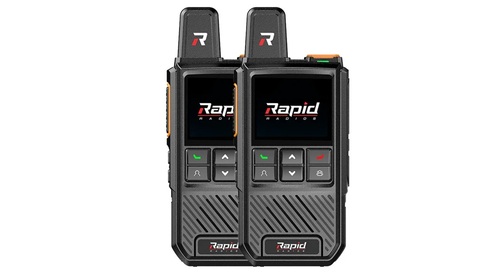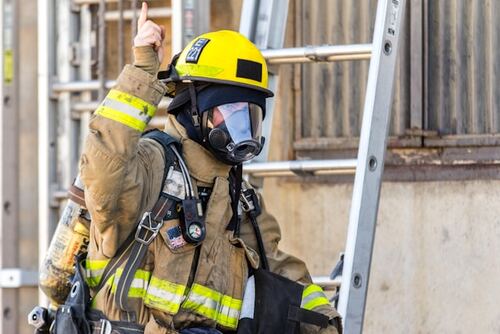Let’s play a game: how fast can your crew get up and running?
Clock’s ticking. New job site, ten-person team, gear’s unpacked. But the radios? Still in the box, waiting for some “programming” step that feels more like hacking into NORAD than setting up comms.
Sound familiar?
It doesn’t have to be this way. In fact, it shouldn’t be this way. That’s why modern crews are switching to two-way radios that prioritize one thing above all else: simplicity.
No setup. No weird codes. No software downloads. Just a rugged handheld device and a big, beautiful push-to-talk button. Done.
Push. Talk. Repeat.
Old-school two-way radio had their charm—until you actually tried to use one out of the box.
Set the channel. Match the frequency. Adjust the squelch. Hope for the best.
Modern devices toss all that in the scrap pile.
Instead of fiddling with knobs and menus, your team picks up a radio, presses the button, and starts talking. It’s that simple.
Why? Because sometimes speed is everything. When you’re on the clock—whether running security, managing logistics, or leading a field crew—no one has time for a five-minute tech lesson. They need a tool, not a puzzle.
No Setup = No Stress
Imagine this:
You hand a new team member a radio. They look at it for three seconds. Press the button. Say “Hey, can someone bring a ladder to Zone B?” Someone responds. Everyone keeps moving.
That’s the kind of zero-learning-curve communication that keeps projects on time and teams on point.
No IT department needed. No user manuals crammed into glove compartments. No “Let me Google how to change the channel” mid-shift. Just plug-and-play, or more accurately, power-on-and-go.
This is why two-way radio simplicity isn’t just a convenience—it’s a performance edge.
Pre-Programmed Channels? More Like Pre-Frustrated Users.
Sure, you can get traditional radios that promise “custom configurations.” But who’s doing that configuring? You? Your already-overworked foreman?
You know what never needs configuring?
Radios that run on LTE, like Rapid Radios’ PTT model. These units connect automatically to cellular networks—no programming, no syncing, no channel juggling.
All the team needs is a charged device and a thumb.
Simplicity Without Sacrificing Power
Let’s be clear: simple doesn’t mean underpowered.
- Nationwide LTE coverage (talk to anyone, anywhere with signal)
- Clear, instant voice (not that grainy “is that a squirrel or Dave?” audio)
- Group and one-to-one comms (like texting, but with your voice)
- USB‑C charging (because no one misses proprietary chargers)
And yes—it’s built to survive dust, drops, and downpours. Because a simple radio that breaks on day two? That’s not simplicity. That’s a liability.
Who’s This For? (Spoiler: Probably You)
This “no setup” two-way radio model is perfect for:
- Construction crews that change sites weekly and don’t have time to reprogram radios every Monday.
- Event teams that bring in new staff daily and need instant coordination.
- Logistics operators who want everyone on the same page from warehouse to delivery truck.
- Security teams who can’t afford radio errors when things go sideways.
Basically, if your team needs to move fast and communicate faster, this kind of instant-on simplicity is a game-changer.
More Than Simple. Smart.
Modern two-way radios aren’t just easier—they’re smarter. Some include GPS tracking. Others offer dispatcher dashboards. Most allow real-time updates or app pairing.
But the best part? You don’t need to use any of that.
This new breed of walkie-talkie is designed so that the core function—press to talk—works right away. Everything else is optional, not required.
Use it straight out of the box. Add bells and whistles later. Or never.
That’s simplicity with flexibility. And that’s exactly what real-world teams need.
Final Word: Don’t Overthink It
Two-way radios shouldn’t make your job harder. They should be the easiest thing you hand out at the start of the day.
And with LTE-powered radios, you finally get it:
- No programming.
- No tech headaches.
- No missed messages.
Just the sound of a team that’s locked in, communicating clearly, and getting the job done. All because someone finally asked the right question:
“What if using a two-way radio was as easy as talking?”




